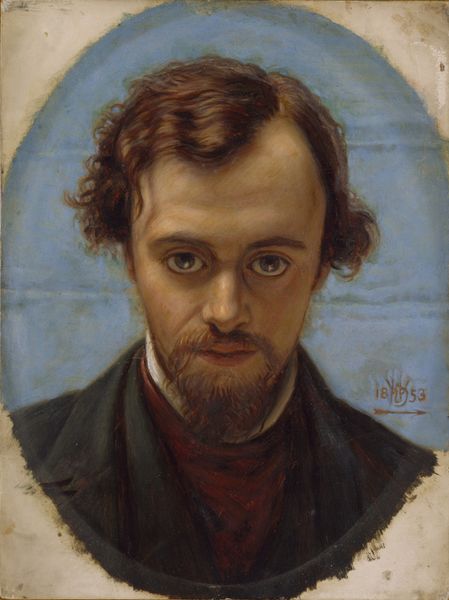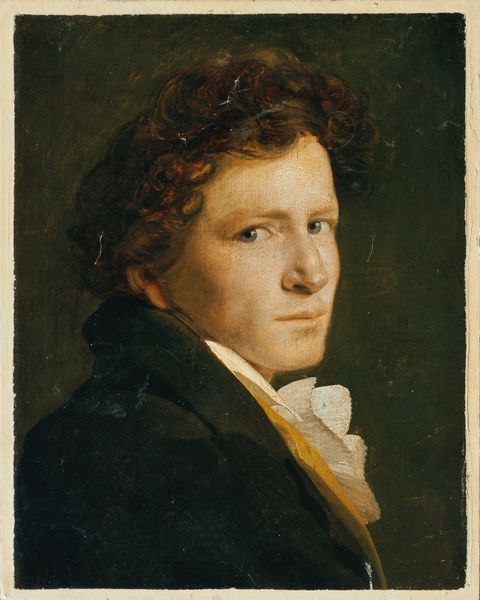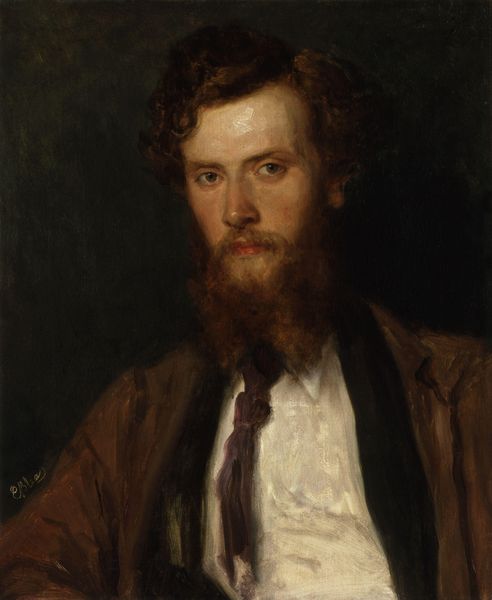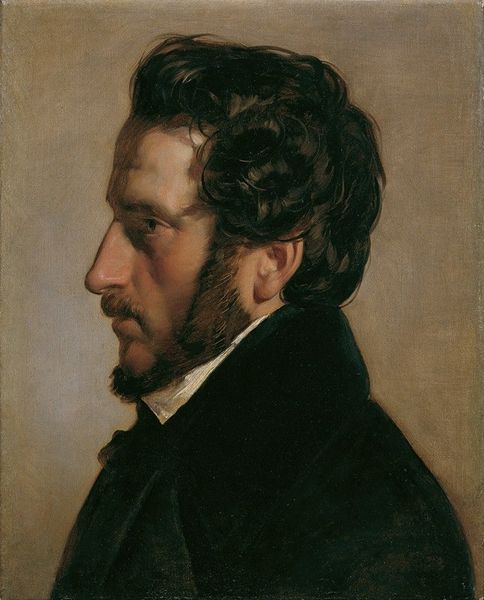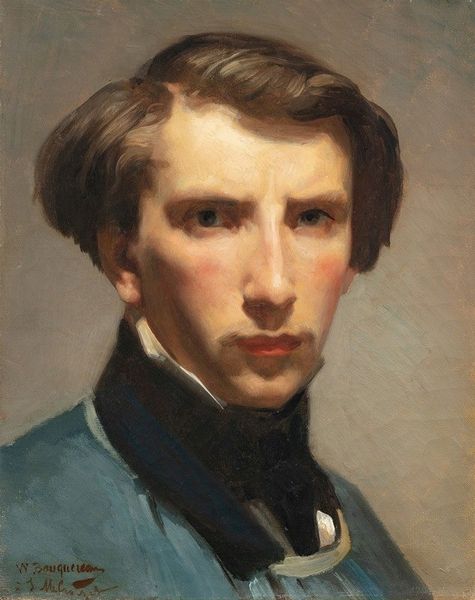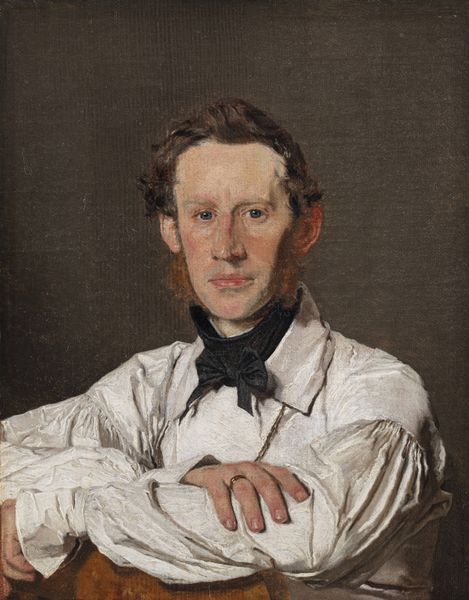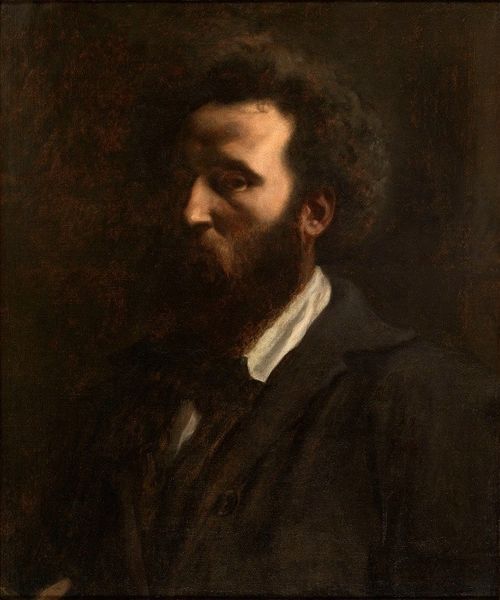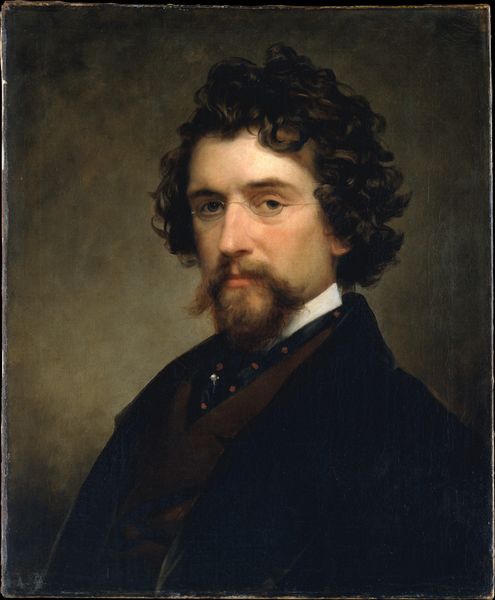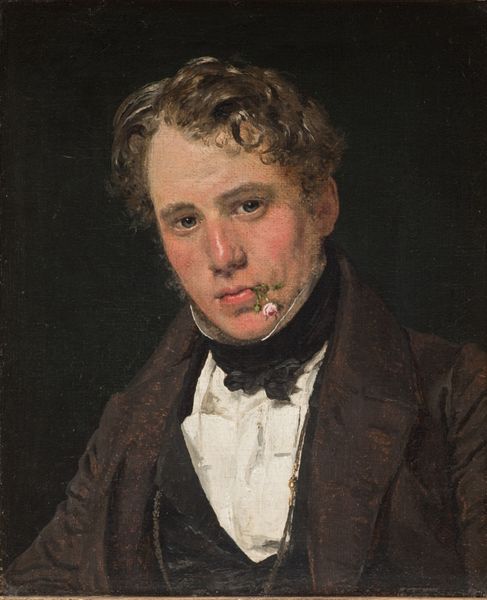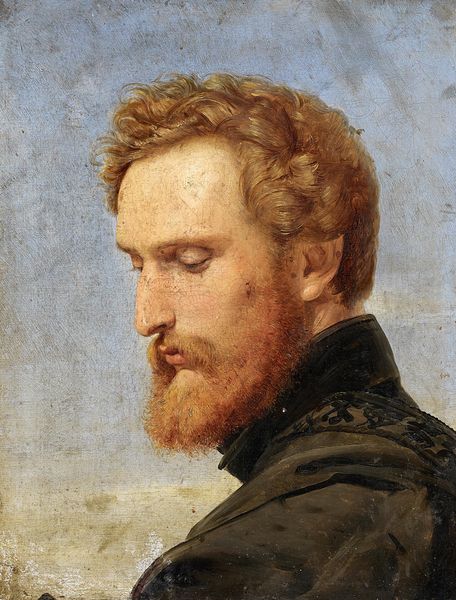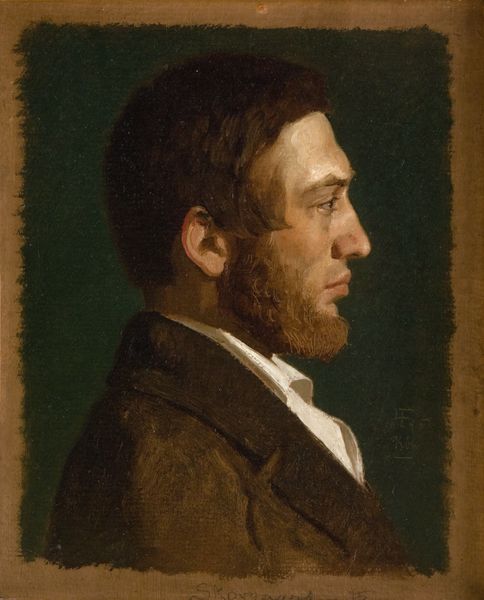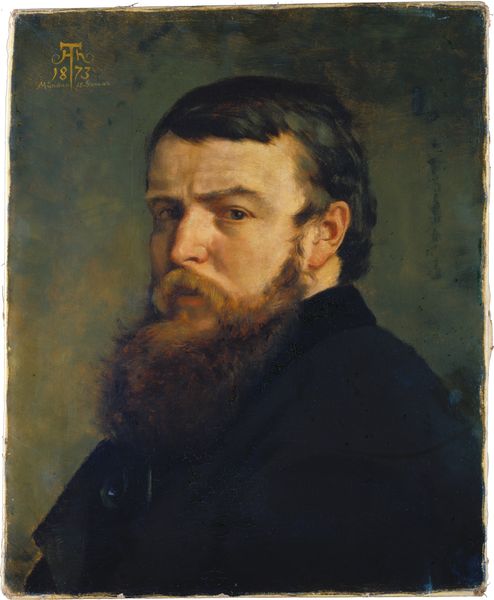
oil-paint
#
portrait
#
portrait image
#
portrait
#
oil-paint
#
portrait reference
#
portrait head and shoulder
#
romanticism
#
portrait drawing
#
facial portrait
#
portrait art
#
fine art portrait
#
realism
#
celebrity portrait
#
digital portrait
Copyright: Public domain
Curator: I’m immediately struck by the somber tone of this piece. The dark background seems to swallow the subject, drawing all attention to his face. It feels… melancholy, almost burdened. Editor: Precisely. What we have here is a "Portrait of Laurits Andersen Ring" by Hans Andersen Brendekilde. What makes it remarkable is how Brendekilde, known for his rural scenes, captured the essence of a fellow artist, Ring, whose work often grappled with the harsh realities of rural life and existential themes. Curator: Knowing that context enriches the reading. The intense gaze, the slightly downturned mouth, it all suggests a man deeply engaged with the world's difficulties. I wonder what sociopolitical climate shaped Ring's worldview and how it is reflected here? Was this during a period of intense agricultural reform or social upheaval in Denmark? Editor: The late 19th century was indeed a time of great change, marked by industrialization and the rise of social democratic movements. Ring's own background, coming from peasant stock, significantly influenced his artistic vision and his subjects— themes that would resonate through art and cultural institutions invested in creating a national identity. Curator: So, this portrait is not merely an image, but a statement on the evolving role of the artist in a changing society. The portrait is also imbued with what we know of Brendekilde's art of capturing his subjects from disadvantaged backgrounds. Were the subjects equally menaced by what was coming ahead? Editor: Precisely. The seemingly straightforward portrait serves as a nexus of identity, class, and the shared artistic mission to represent the unvarnished truths of their time. Think about the museums displaying it, how they reinforce narratives about Danish identity and artistic heritage. Curator: I see it, almost like the portrait became an extension of social manifestos and concerns through a person deeply enmeshed with nature and reality. Thank you for helping see these complex layers within what appeared, initially, as a traditional portrait. Editor: My pleasure. Considering artworks within these complex cultural frameworks always adds valuable perspectives and is necessary if we are to think about not just the art of the past, but its ability to activate discussions for social change in the present.
Comments
No comments
Be the first to comment and join the conversation on the ultimate creative platform.
